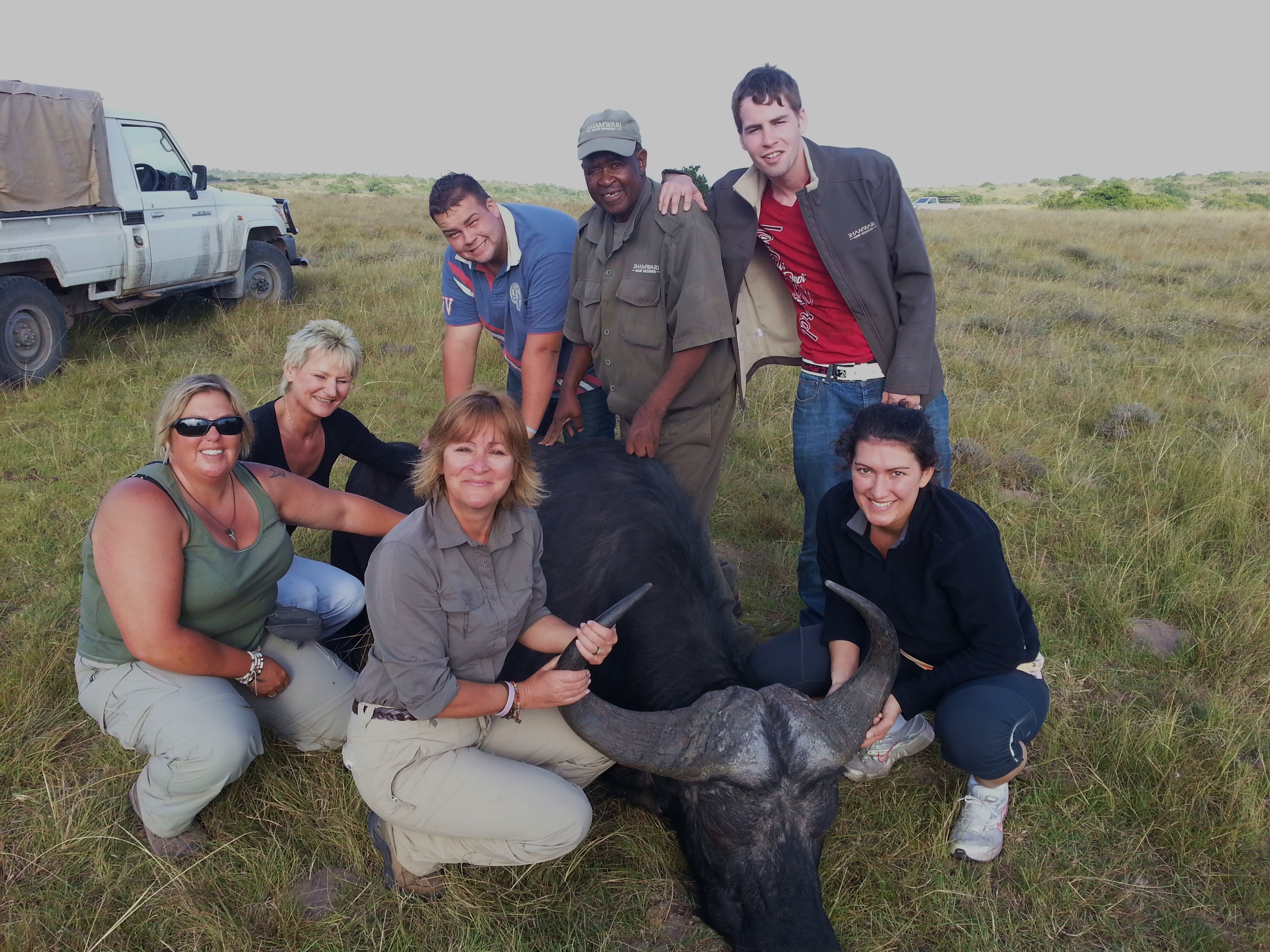The last two weeks have been fully dedicated to buffalo capture. Winter is on our door step and that means game sales! Shamwari is a privately owned Game Reserve and to keep the reserve running we rely on both tourism and the sale of game. Buffalos have to be captured long in advance because they have to be tested for diseases before one can sell them. Diseases such as foot-and-mouth disease (FMD), bovine tuberculosis (BTB) (which was probably introduced onto the African continent with infected cattle in the early colonial era), corridor disease (CD) and bovine brucellosis can easily spread to other livestock . Unfortunately approximately 80% of South Africa’s buffalo population are carriers of one or both of these diseases (CD and FMD). The area surrounding the Kruger National Park has massive problems with diseased buffalos, which have spread to their lions amonst other animals. The Eastern Cape is a disease free area and we’d like to keep it that way.
For two weeks the volunteers had very early mornings, leaving in the dark to get to the far north of Shamwari by the time the sun rises. We had to find the buffalo herd at Bayethe and radio the game capture team to give them the herd location. The buffaloes were darted two at a time and as the first one went down we would drop off a team to keep it upright as the second team tended to the second buffalo. Volunteers helped from the loading to the offloading. All the darting was done from our vehicle and the vet, Johan Joubert and ecologist, John Obrian explained the procedures as it happened. All and all we captured 20 buffaloes.
Then came phase two. The state vet arrived on Monday to test all the buffaloes in the holding bomas for the diseases mentioned above. Volunteers helped with the ear tagging and numbering, drawing of blood, injections and micro-chipping for keep track of which buffalo is which.
All and all a great experience for those who are looking for a real wildlife conservation experience!. Well done team!!

